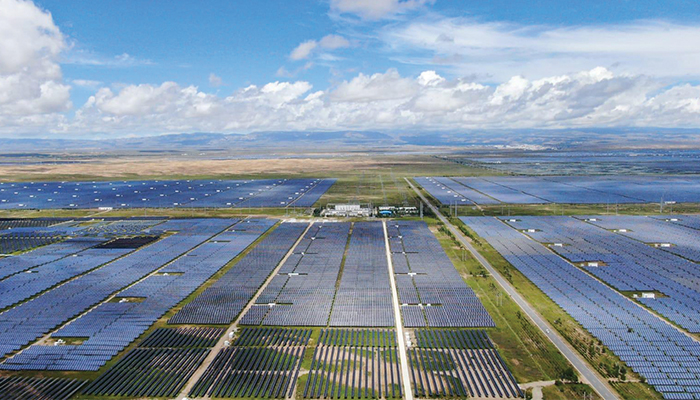
Following Chinese President Xi Jinping’s recent announcement of a carbon neutrality goal, China’s environmental authority has taken quick action to explore the path to materialise it, shedding light on the country’s further commitment to green development and global combat against climate change.
China aims to have CO2 emissions peak before 2030 and achieve carbon neutrality before 2060, Xi announced at the general debate of the 75th session of the United Nations General Assembly.
Forward-looking policies
Xi’s statement has put forward higher requirements for China’s efforts to tackle climate change and seek green and low-carbon development as well as ecological advancement in the longer term, according to Sun Jinlong, Party chief of the Ministry of Ecology and Environment (MEE), and Huang Runqiu, minister of ecology and environment.
The goals should be taken as new opportunities to promote the transformation and upgrading of the economic, energy and industrial structures, promote the innovation of new technologies and new forms of business, and build an economic system featuring green, low-carbon and circular development, the two officials said in a co-authored article published on the Guangming Daily.
They said the ministry will set carbon intensity target for the 14th Five-Year Plan period (2021-2025) following the targets announced by Xi, and draw up specific plans to tackle climate change for the next five years.
Low-carbon development
By the end of 2019, the country’s carbon intensity had decreased by 48.1 per cent compared with the level in 2005, with its share of non-fossil fuels in primary energy consumption reaching 15.3 per cent, meeting the targets set for 2020.
To achieve the goal of having CO2 emissions peak before 2030, the ministry will make corresponding action plans for the next decade to push local governments, relevant departments and key industries to take action and work together toward the goal.
The MEE will continue to control fossil fuel consumption, vigorously develop non-fossil energy, deepen energy and price reforms, form a strong synergy in the efforts to address climate change, effectively enhance climate governance capacity to achieve a “green recovery,” the article said.
China has piloted carbon emissions trading in seven provinces and cities, including Beijing, Shanghai and Shenzhen, since 2011 to explore market-based mechanisms to control greenhouse gas emissions.
By the end of August, about 406 million tonnes of carbon dioxide emission quotas had been traded in the pilot carbon trading markets and the total transaction volume reached 9.28 billion yuan (about 1.39 billion U.S. dollars), data from the MEE showed.
Based on existing experience, the ministry will accelerate the construction of national carbon markets, continue low-carbon pilot programs, and launch pilot projects for climate investment and financing.
He Jiankun, deputy director of China’s national expert committee on climate change, said by 2050, China has to build a sustainable energy system with new energy and renewable energy as the mainstay, and non-fossil fuels should account for at least 70 per cent in the energy system.
China is now the world’s biggest investor in renewable energy, accounting for about 30 per cent of the total global investment in the area each year since 2015.
China’s renewable energy generating capacity in the first half of this year increased remarkably, with the generating capacity of the photovoltaic power hiking by 20 per cent and that of wind power rising by 10.9 per cent over the same period last year, data from the National Energy Administration showed.
Global climate governance
If China were to achieve carbon neutrality before 2060, it would lower global warming projections by around 0.2 to 0.3 degrees Celsius, said a new study by Climate Action Tracker, a Berlin-based non-profit climate science and policy institute.
Looking to the future, China is expected to be more involved in global climate governance. The MEE, for instance, will make efforts to expand China’s exchanges and cooperation with other countries to address climate change and advance South-South cooperation on climate change.
In 2019, China introduced nine training programs covering climate financing, low carbon technologies, and other major climate change topics. The sessions were attended by 230 government officials, experts, scholars, and technicians from 66 developing countries.
The MEE said China will continue carrying out training programmes while developing new projects based on the needs of different countries.
Nobel laureate Daniel Kammen said that China’s goals of having CO2 emissions peak before 2030 and achieving carbon neutrality before 2060 are huge steps forward, and he believes China has the capability to achieve the goal ahead of the set time frame.